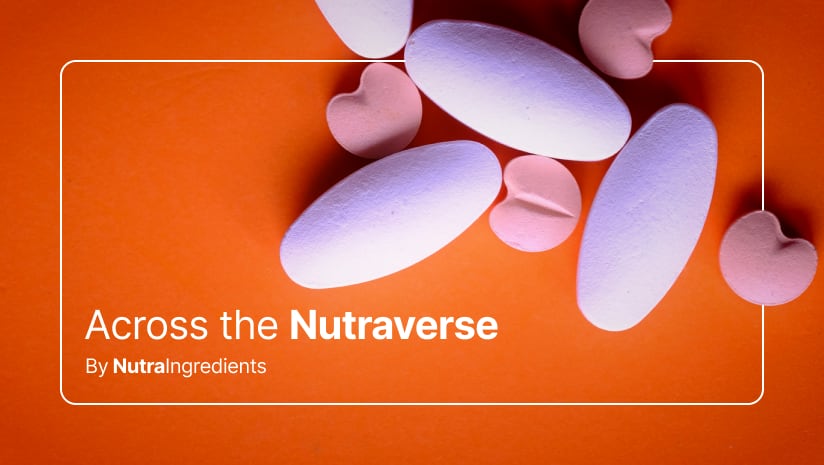Last week’s big news included Swisse’s impressive H1 performance, RFK, Jr.’s call for comprehensive nutrition education and training at America’s medical education institutions, and the European Commission confirming Samsoniella hepialiis not novel and can be used in dietary supplements.
Anti-aging, magnesium glycinate launches fuel Swisse’s H1 growth
Swisse has reported strong growth in its key markets of China, Australia and New Zealand for the first half of this year, led by what it says are innovations that have aligned with changing consumer preferences, including beauty, magnesium glycinate supplements and kids gummies.
Swisse’s parent company Health and Happiness Group (H&H Group) announced its half year financials on Aug 26.
The company’s Vitamin, Herbal and Mineral Supplement (VHMS) segment—which comprises of Swisse’s products—grew by 5.8% in revenue from RMB$3.3 billion (US$455.2 million) to RMB$3.4 billion (US$477.5 million) during the period.
China, Australia and New Zealand are the three major markets for Swisse.
In China, innovations that cater to consumers’ evolving needs in beauty-from-within, detox and aging were said to be a key reason driving Swisse’s revenue growth.
Aside from Swisse, which is H&H Group’s largest segment, the company also produces infant formula, pediatric probiotics and supplements under the brand Biostime, as well as pet nutrition under the Solid Gold and Zesty Paw brands.
RFK, Jr. and HHS call for nutrition education in medical schools
The U.S. Department of Health and Human Services (HHS), with the support of the U.S. Department of Education, are calling for America’s leading medical education organizations to immediately implement comprehensive nutrition education and training.
The announcement is seen as an important part of RFK, Jr.’s Make America Healthy Again agenda, which prioritizes prevention and reducing chronic disease through improved diet and public health measures.
“Medical schools talk about nutrition but fail to teach it,” said Secretary Kennedy in a statement. “We demand immediate, measurable reforms to embed nutrition education across every stage of medical training, hold institutions accountable for progress, and equip every future physician with the tools to prevent disease—not just treat it.”
Responding to the announcement, many nutrition and dietary supplement stakeholders voiced strong support.
Daniel Fabricant, PhD, president and CEO of the Natural Products Association (NPA), applauded the announcement, which he called an “historic step to prioritize nutrition education throughout the medical training pipeline.
“By ensuring that future physicians are equipped with the knowledge to counsel patients on a healthy diet, which may include supplementation, HHS is aligning with what consumers already know: Better nutrition means better health.”
Steve Mister, president and CEO of the Council for Responsible Nutrition, said: “Poor diets are not without consequence,” he said. “It’s encouraging to hear the Administration sound similar alarms that healthcare providers should get this training before they are certified to practice.”
Cordyceps ‘boom’ on the horizon as novel food status of S. hepiali clarified
The European Commission has confirmed that Samsoniella hepiali, commonly marketed as cordyceps, is not novel and can be used in dietary supplements, marking a major milestone for the mushroom industry.
The status is similar to Cordyceps sinensis, also known as ‘caterpillar fungus’, which was confirmed as not novel earlier this year. However, the mycelium and fruiting body of another species, known as Cordyceps militaris, remains novel according to the Novel Food catalogue.
While the ruling is positive and ‘long overdue’, it could cause confusion in the industry, according to Robin Gurney, director of the Estonia-based mushroom extract supplier Musheez.
This is because S. hepiali is commonly known and sold as cordyceps but actually belongs to a different genus.
Predominantly grown in the Qinghai-Tibet Plateau region of China, cordyceps traditionally refers to Ophiocordyceps sinensis. Known as the ‘winter worm’ or ‘summer grass’, this fungus species is very rare and may even be considered endangered.
The species has been used for hundreds of years in Chinese medicine, with research showing the fungus may support stamina, vitality and lung and kidney health.
However, given that wild O. sinensis is in scarce supply, it has become an extremely expensive commodity, sometimes costing thousands of euros per kilogram, according to Gurney.
For this reason, S. hepiali has effectively become a replacement for O. sinensis in dietary supplements across the globe.
“S. hepiali belongs to the same fungal family— Cordycipitaceae—but is a different genus from O. sinensis,” Gurney said. “The beauty of S. hepiali is that it delivers the same key compounds as wild cordyceps, but it can be produced safely and sustainably.”




